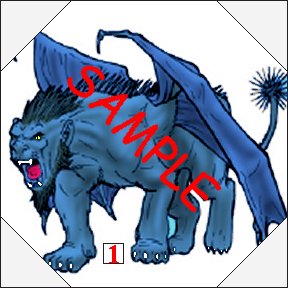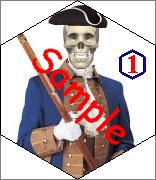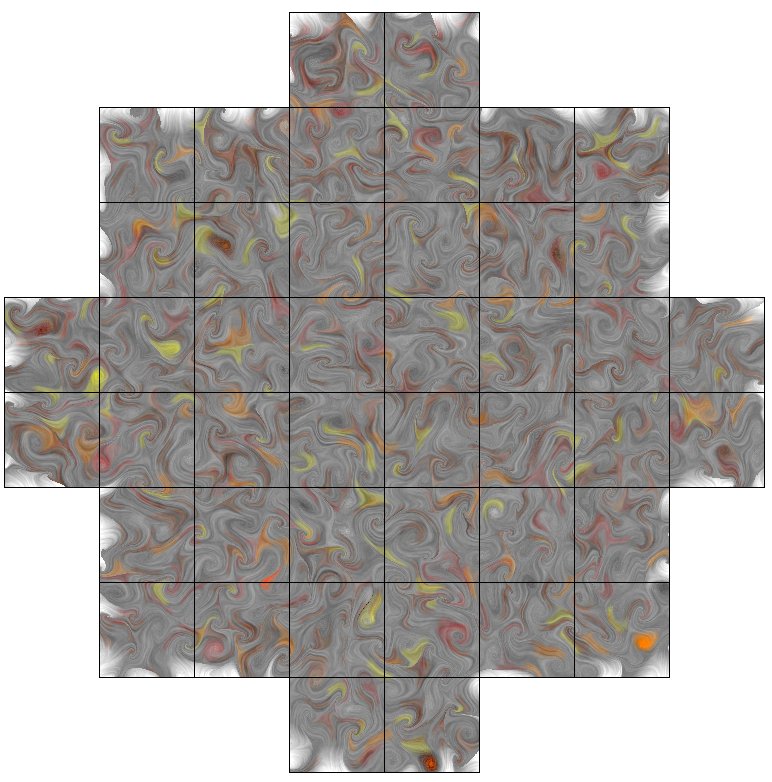| DM Tips & Tricks | Laminate | ||
|---|---|---|
|
One the best investments you can make as DM is to purchase a laminator. I purchased a Duck-brand laminator from Wal-Mart for around $25.00 and have run hundreds of sheets through it. I buy the lamination pouches in bulk at the local Sam's Club; 200 pouches for around $11.00. A laminator allows you to make durable handouts for your players, quick reference sheets that aren't going to get crumpled up, stained with Cheetos, or otherwise destroyed, and make your own tokens and maps. What you spend in laminating pouches you make up for in saved ink for your printer. A laminated handout "looks" more official and professional; that doesn't seem like a big deal, but players react even more excited when they get something you took the 30 extra seconds to laminate rather than a plain sheet of paper. You can use a graphics program like Adobe Photoshop or Paint Shop Pro to make your own counters. Create an outline template, and then you take any image you want, paste the outline over it, trim around the edges, print as many as you want, laminate them and cut out an entire army of whatever miniature you want. Since you are creating the graphic, you can even number them or color code them in any manner you wish. You can use the same concept to create walls and other barriers and spell-effects that are sturdy enough to last game after game. One Inch Square GridsFor Dungeons & Dragons 3.5 Edition games, I use an unequal octagon template for tokens (I have found the "points" of the octagon make the token easier to pick up and move; round is too difficult to get a hold of). I have a template for Medium, Large, Huge, Gargantuan and Colossal size creatures. Below are links to a GIF version of each of my templates. The ones I use are kept in .PSP format so I can maintain the center transparency (in other words, if you use these, you will have to "cut out" the white part in the middle), but I thought GIF would be a more universal format. Below is a sample token of a Half-Blue Dragon Manticore my players recently encountered. It uses the Huge template.
You can acquire a wealth of useful images from Fiery Dragon Productions. I prefer their Counter Collection Digital product. You can make your own counter images using HeroMachine. Also, you can find a huge number of graphics using the Images search function of Google. HeroScape TerrainIf you play HeroScape, or use that terrain for your Dungeons & Dragons games, you will need a different set of templates. I am testing the following in my own games, and they are based on a hexagon pattern.
Below is a sample token of a Bone Minuteman in Medium size for use on the HeroScape hexagon grid system. Note, I used a blue border around the number box for a "team" or "army" designation and can insert any number I want in the box to number the soldiers.
Area of EffectFor area of effect, I have created the following templates for 1-inch grids. I do not currently have area of effect templates for HeroScape terrain. To use this terrain, open the template, use Save As to make a new file, and use whatever fill option you want to fill each square with a pattern. Here is an example I made for an incendiary cloud effect.
Dry and Wet Erase MarkersLaminated pages work great with both dry and wet erase markers. You can make record sheets for your games that are reusable for game after game using your laminator. Dry erase markers tend to rub off and smear very easily, and are the easiest to erase. Use these for things that change very often during the game. For example, perhaps you have a chart showing everyone's initiative for the current encounter and the current round. You will need to erase and re-mark such a sheet often. The wet erase markers won't smear to the touch and are great for recording things that will be handled by several people but don't have to change often. In our Dungeons & Dragons 3.5 games, we have a reference sheet that we keep on the table. It includes a list of actions and whether they provoke an attack of opportunity, a list of conditions that commonly affect characters, and a chart for writing down your initiative and if you have gone yet this round. Because it has double function as a reference and a record, it saves table space while still improving game speed because information is readily available. Another option is writing on your monster and/or character counters. Rather than printing a number, as described above, you can have a blank on your markers and write in whatever number and color you want. You could even have a color code for how injured a creature appears. Yellow denotes light wounds, orange for pretty serious, and red for critical. Then, your players can glance around the table and check conditions in case they miss your description or you don't do a good job describing how each monster's wounds appear each round. |


